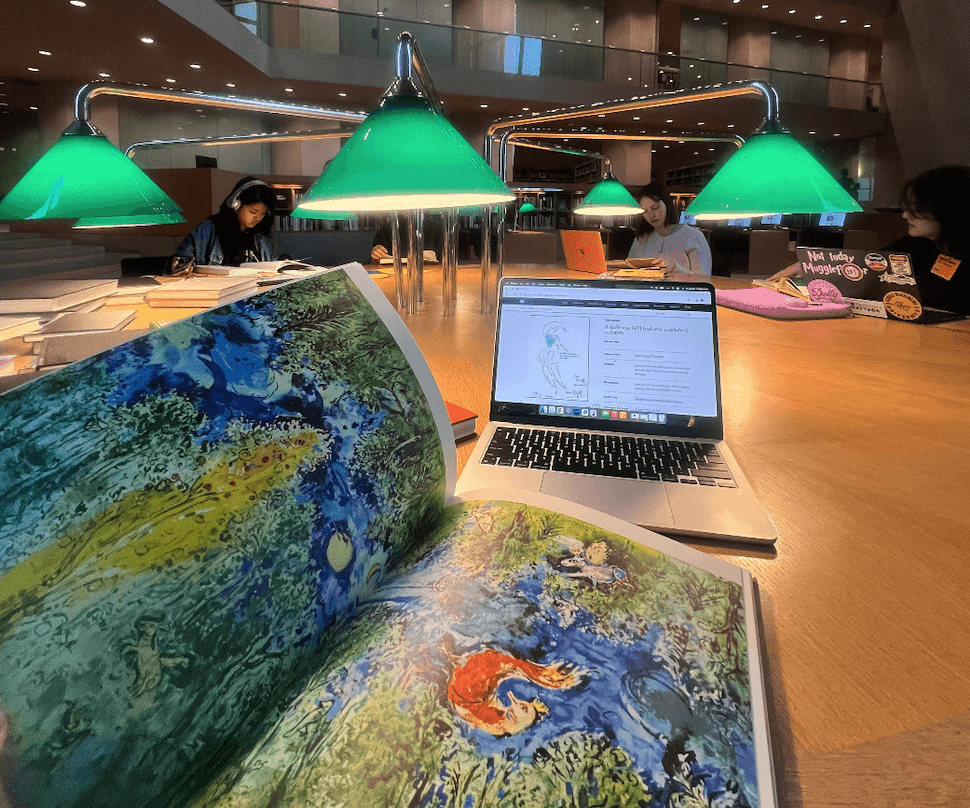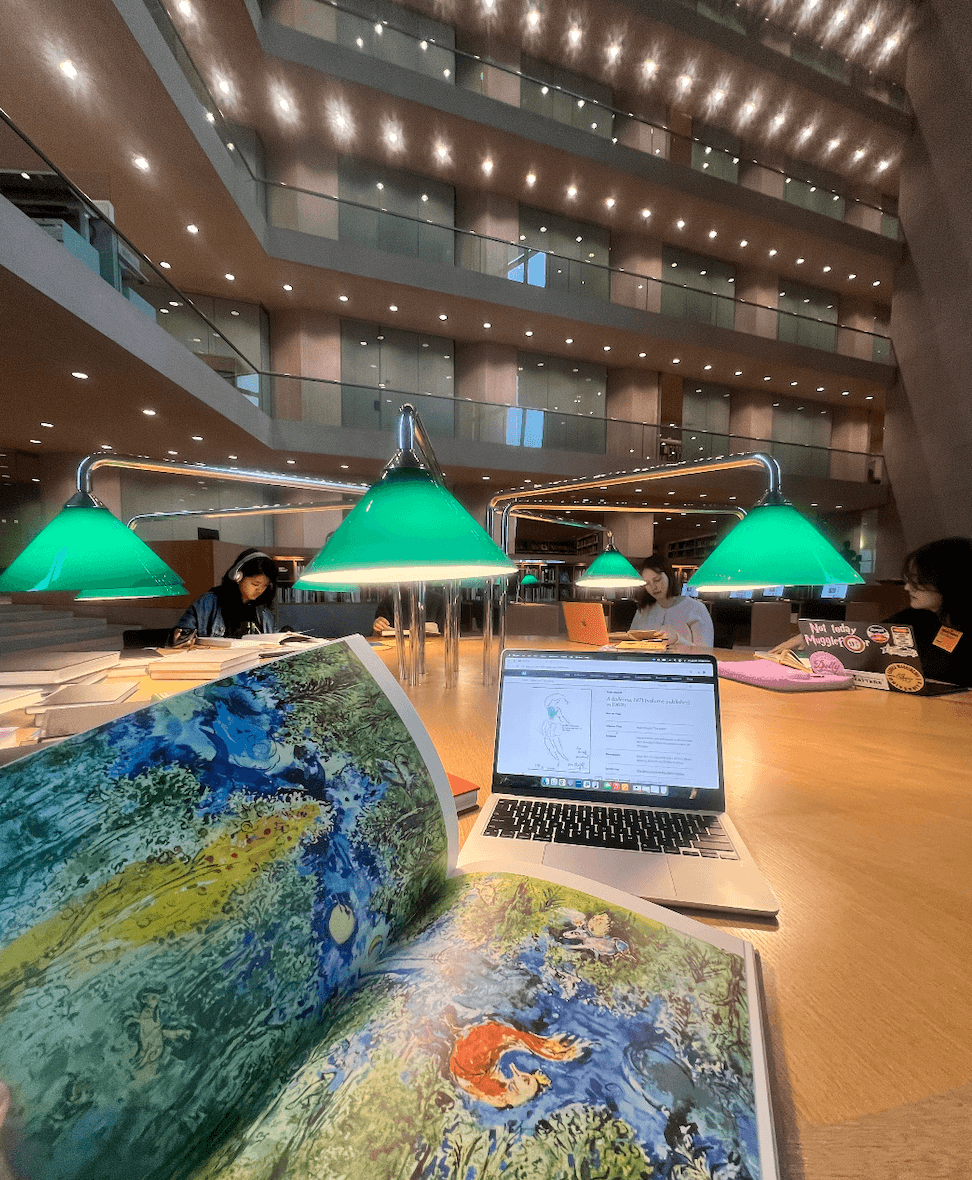

Author: Talulah Lametrie
Part of a series of University Writing courses offered at GW, UW 1020: Marc Chagall, An Artist in Exile, taught by Dr. Rachel Pollack, is the perfect opportunity to be more immersed in research opportunities in the bustling city of Washington D.C.
Amongst the flat facades, government buildings, dystopian-looking city that is the capital of our nation, lies a plethora of the most historically significant objects. To take Dr. Pollack’s class is to immerse yourself in this rich history without fail. The course prompts visits to a variety of sites, including the Luther Brady Art Gallery, the Kreeger Museum, the National Gallery of Art Library and Sculpture Garden, and the Cotsen Textile Traces Study Collection at the Textile Museum. At all these places students collect and curate novel information on Marc Chagall.
After his passing, Marc Chagall’s oeuvre was distributed internationally to a number of beneficiaries; meaning, many of his pieces are not on display for public viewing. Dr. Pollack, if you will, serves as the key to Narnia: she uses her platform and connections to gallerists, archivists and museum specialists to pull rare materials and files from library special collections and vaults for students to examine from only inches away. Among these is an original copy of Marc Chagall’s biography: My Life, signed originals from the artists, and letters between Chagall and his contemporaries, like Matisse, all housed in the Rare Book Room at the National Gallery of Art.
The course rigorously improves literacy in the arts – it forces students to decipher and translate texts in foreign languages, learn through a myriad of readings on art history and techniques, and interpret art in their own way, all while keeping log of these ideas in writing. Consequently, students finished the semester with a written portfolio including a number of short essays, research papers, and museum catalogue entries – all of which relate complex art and world history to Marc Chagall.
Dr. Pollack is passionate about and committed to the arts - evident in her teaching. She persuades students to pursue peculiarly niche areas of research and provides unlimited support, expertise and knowledge to assist students in their research process. Furthermore, her connections and endeavors in the Washington D.C. art scene are profound and relate directly to her course subjects.. Her knowledge of writing runs deep, as she offers highly insightful, timely and fitting feedback to student work throughout the course of the semester - in short, students are guaranteed to see a positive trajectory with respect to improvements in their writing.
Sophie Nixon, a student from the 2025 spring semester, agrees. She says, “Professor Pollack’s class was definitely a once in a freshman year experience because she arranged for us to view archived art from the NGA and the Corcoran Collection, opening all of our eyes to research resources we would have never seen otherwise. Even those in class who are not art history students couldn’t help but be amazed at this opportunity presented to us simply by being in Professor Pollack’s class.” Sophie, an art history major, and I, a pre-medical student, share the same love for this class despite our different academic tracks. Despite my focus on STEM classes like biology and psychology, I have thoroughly appreciated everything I learned through this UW and wouldn’t trade it for anything else.

In April, students in UW 1020 Marc Chagall: An Artist in Exile presented their findings on various research projects at a research symposium in the Kiev Collection, hosted by Shelly Buring, the Rare Books and Research Specialist at The Special Collections Research Center (SCRC). Andrew Williams focused on how Marc Chagall’s diet led to his healthy 97 year life, Talulah Lametrie presented her findings on a mysterious silk scarf of Chagall’s in the Textile Museum, and Sophie Nixon pursued the magnitude and plethora of glass windows Chagall designed.
Dr. Pollack’s teachings serve as a reminder of the importance of staying involved, staying curious, and staying imaginative.


